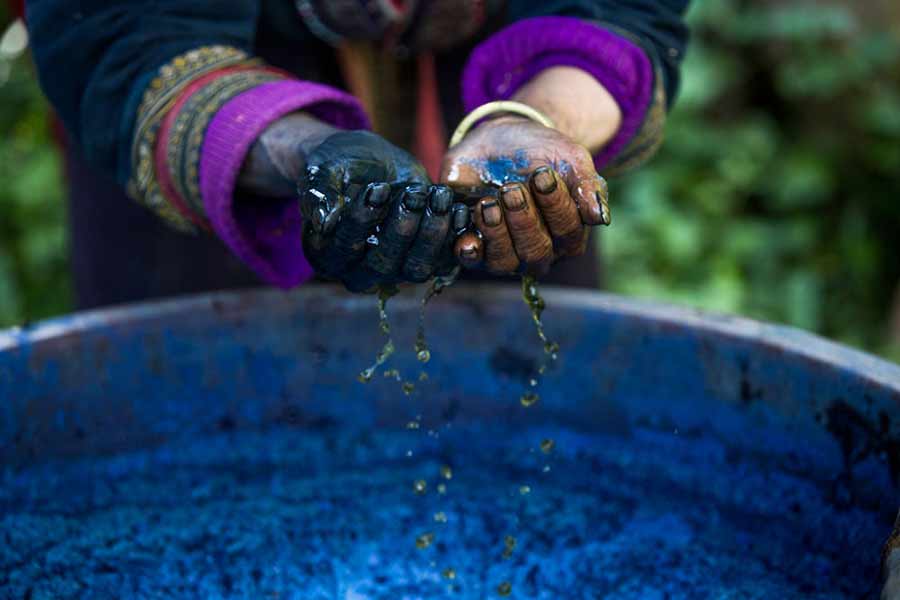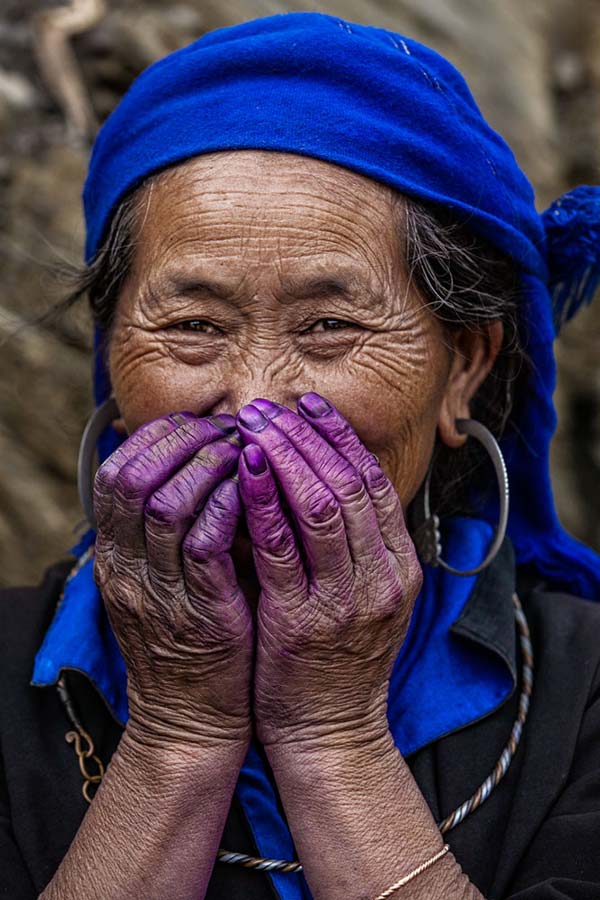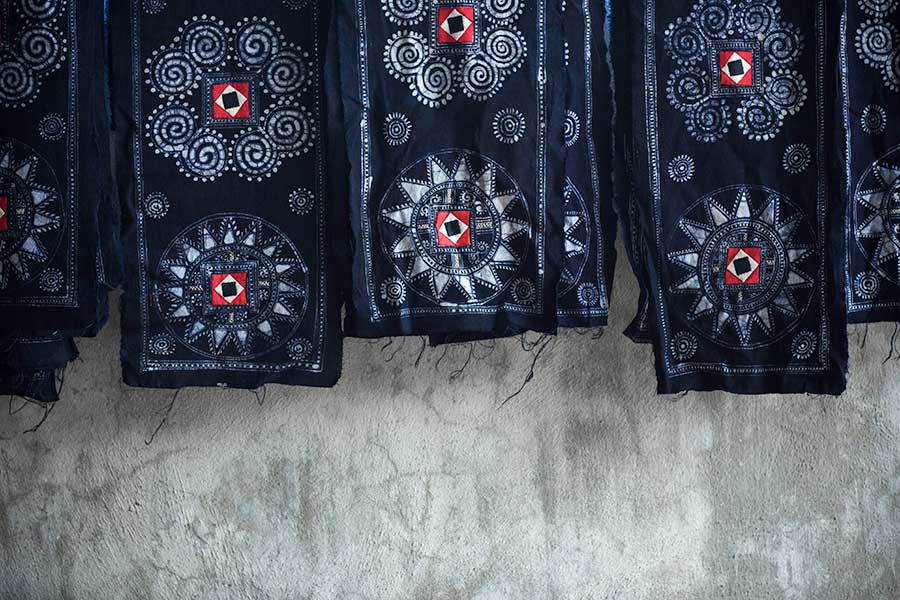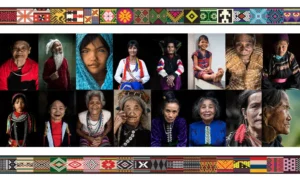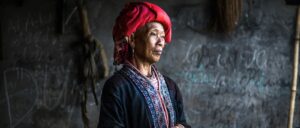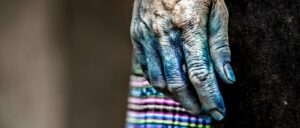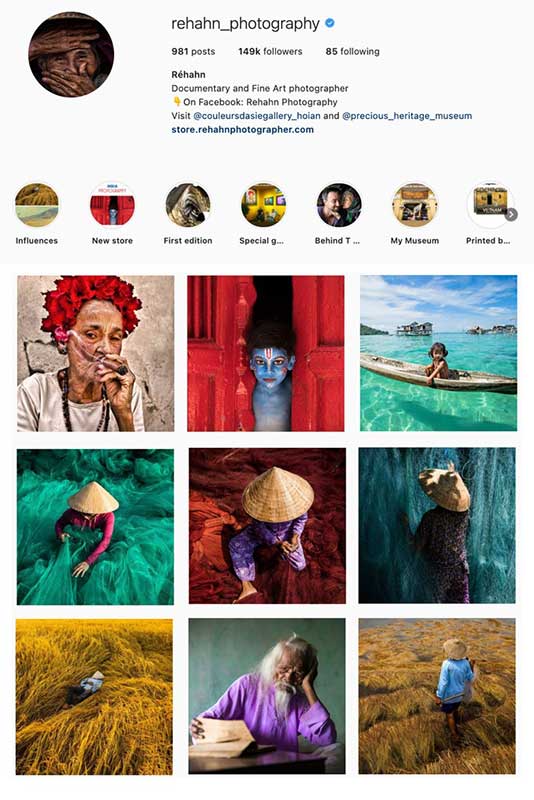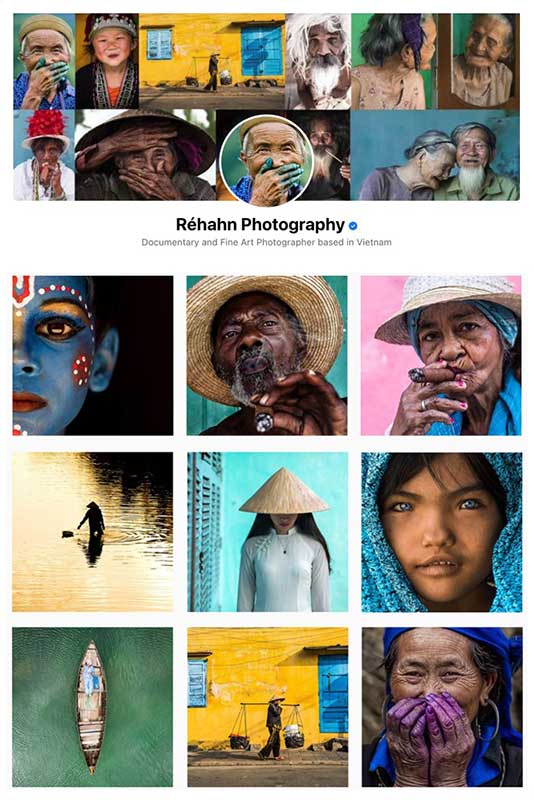Réhahn goes on location to photograph Hmong and Dao artisans working with indigo in Vietnam. Indigo dye is an eco-friendly, sustainable, and fair-trade income for many ethnic groups in Vietnam.
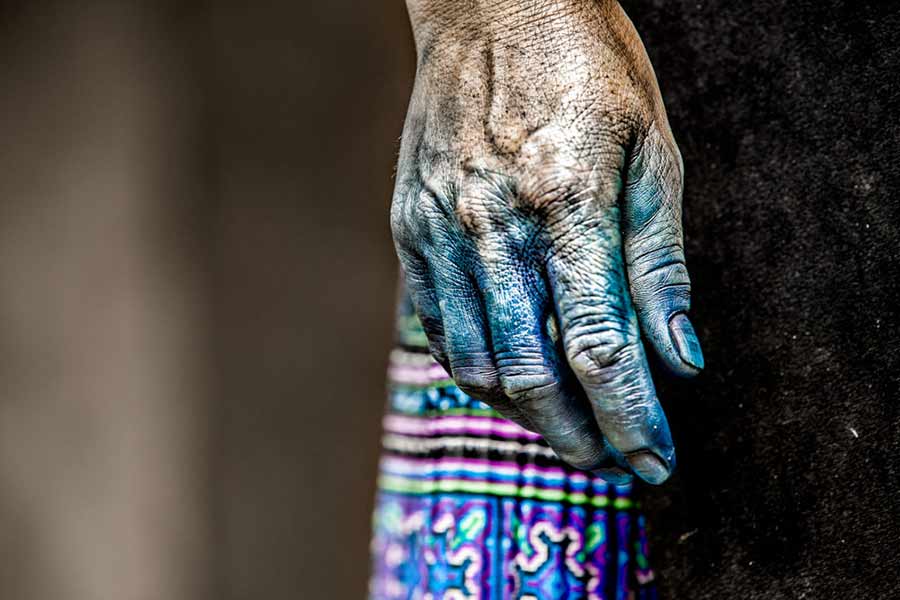
Natural Dyeing Techniques in Vietnam
The Hmong women push swathes of fabric into tubs of bubbling blue dye. Thirty minutes later, hands tinted indigo, turquois,e or violet; they fish the cloth out and hang it to dry. The longer the fabric is in the dye, the darker it will become. Eventually, the cloth will oxidize into a distinctive deep blue—the recognizable cobalt of blue jeans.
As the fabric dries outside their thatched-roof homes, the women continue daily tasks from childcare, to farming to gathering firewood.
Their hands are often deeply lined from decades of work. The repetition of dyeing the indigo cloth over the years has stained their fingers as bright as bluebirds.
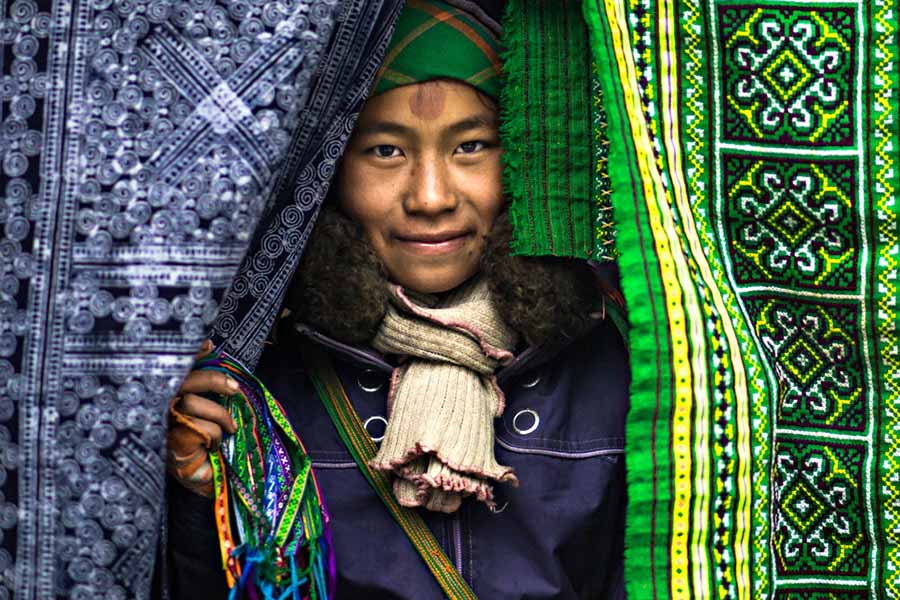
Natural Tribal Traditions
After a communal meal of sticky white rice and stir-fried vegetables, the women go back to their color baths. Their background music is that of a rural village: children at play, livestock shuffling down the dirt paths, roosters crowing.
The smallest children peer with curiosity around the skirts of their grandmothers to peek into the frothy vats of indigo.
Traditional Hmong clothing is tinted an indigo blue that is so dark it becomes black. The method—dyeing, hanging, and drying—must be repeated twice a day for one month to achieve the right depth of color. Depending on the Hmong subgroup—Black, Flower, Striped, or Red—the cloth might be embroidered with a variety of bright motifs. The men’s clothing is typically left somber and straightforward.
For some tribes, the deeper the indigo, the more prized the cloth becomes. Some say that they can tell when a bolt of fabric is finished just by the color of an artisan’s hands.
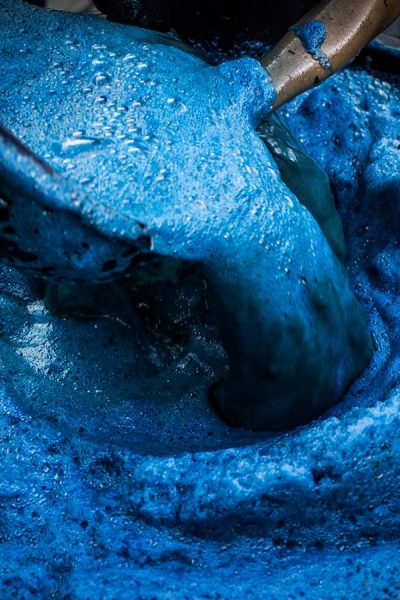
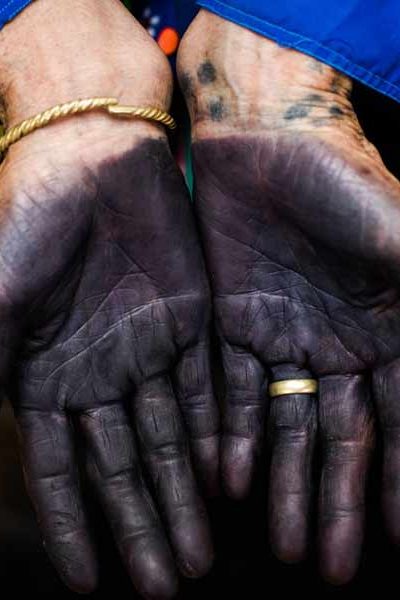
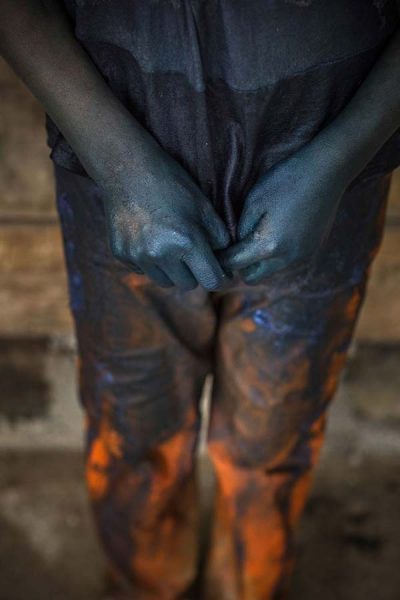
Indigo Leaves and Hemp Harvesting
High in the hills above Sapa, tribes still make dye out of indigofera plants that are indigenous to Vietnam.
The plants with their broad green leaves and barely purple flowers are scattered on the hillsides near the Hmong homes. They typically yield a crop twice a year.
The leaves of the Indigofera plant are harvested and fermented with various additives such as rice wine, urine or lye.
When the fermentation process is complete (timing that the Hmong women seem to know instinctively), the leaves are extracted. They are then allowed to oxidize in the open air. Dried leaves can be ground into powder or paste and stored until it is time to use the mixture on the fabric.
The fabric itself is traditionally spun from hemp plants. However, more than ever, the long process of hemp production and weaving is forgone in Vietnam for pre-purchased cloth.
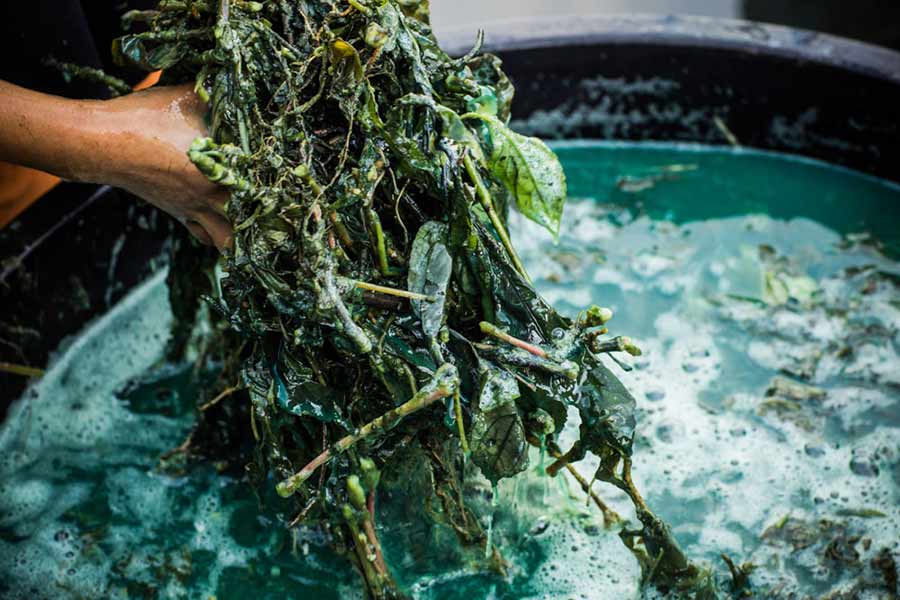
A Short History of Indigo
Indigo dye has an ancient history. Its exact origins are unclear, but the name and mass appeal likely originated from India. Eventually, the spice and slave trade introduced indigo to the world. Indigo blue became a color associated with luxury throughout the colonial era.
In importance, it was surpassed only by the imports of silver and cochineal (an insect used to make carmine dye). Its increased demand spawned the implementation of indigo farms as far as the Americas by the 1600s. This production was eventually used to dye denim and indigo became the iconic shade of American blue jeans by the early 20th century.
The humid climate in Southeast-East Asia makes it difficult to trace the history of indigo in Vietnam. Ancient textile samples have been lost or disintegrated. However, some historians believe that the techniques for transforming Indigofera plants into dye were discovered independently by numerous cultures in Asia around the same time prior to the Medieval period.
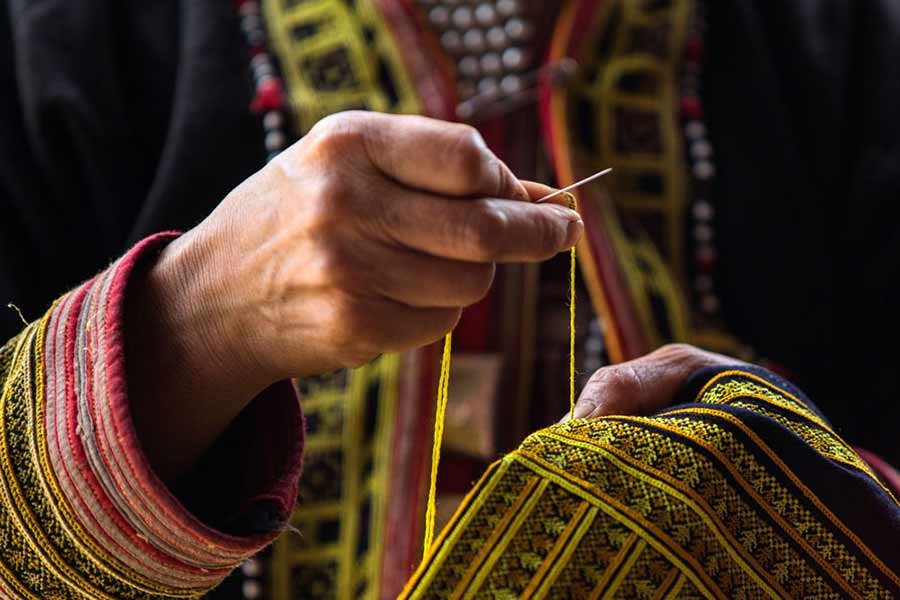
Continuing Heritage Traditions in Vietnam
In addition to the Hmong, other ethnic groups in Vietnam, such as the Dao, the Nung, and the La Chi, maintain strong indigo dyeing traditions. Some even sell their fabrics at the markets for income for their communities. But now, millions of kilos of synthetic indigo dye are produced every year just to color blue jeans. As a result, natural dyeing traditions are rapidly being pushed aside in favor of modern methods.
Why should buyers favor natural indigo dye over synthetic?
Sustainability is a word that has been used (perhaps overused) a lot over the past five years. Sometimes, it’s added to a product description simply to target customers who try to be more conscientious about their carbon footprint. There is even a word for this practice of fake environmentalism – “greenwashing.”
Yet, when it comes to companies that “bluewash” by falsely claiming they use natural indigo dyes, they are risking more than just bad publicity. In this case, sustainability stands for the preservation of the environment as well as the heritage of ethnic communities.
When natural indigo dye is made, fertilizer can be created from the leaves after the color has been extracted. The water can then be used to irrigate crops. On the other hand, synthetic indigo is made from petrochemicals and formaldehyde, which leave behind chemical waste that pollutes the water.
In some ethnic villages, the techniques for how to harvest and prepare natural indigo are not being passed down to younger generations. At times, the waning knowledge is held in the minds and hands of the eldest women in the communities. Many of them over the age of 80.
Purchasing authentic, handmade fabrics can give lasting employment to the ethnic groups of Vietnam. Preserving the Hmong ethnic group’s crafting techniques is also a way to protect their cultural heritage.
In my Precious Heritage Museum, there are Hmong costumes preserved alongside those from all 54 ethnic groups in Vietnam. I have only to pause next to the fabrics and touch the intricate embroidery to return in my mind to the green hills around Sapa. I remember the smiles of the Hmong and the Dao, the beauty of their heritage right there on their hands.
Like any of these photographs? Visit our Online Store and make it yours

